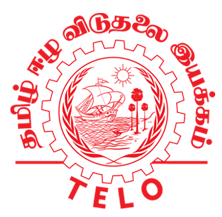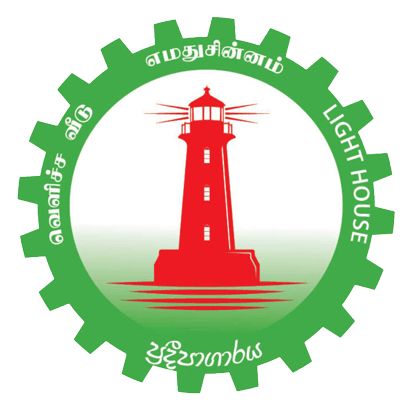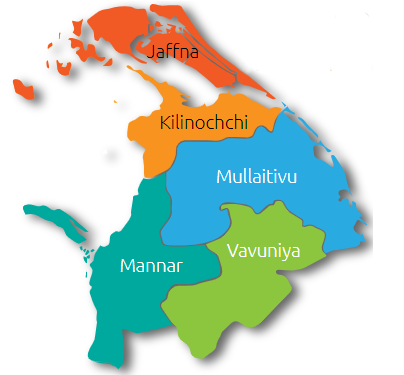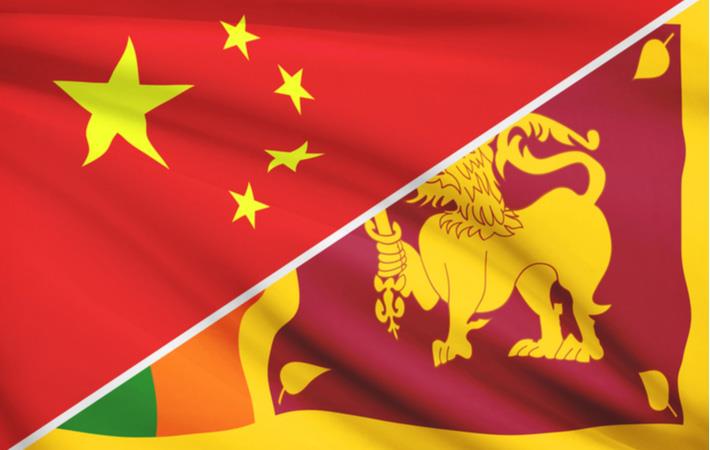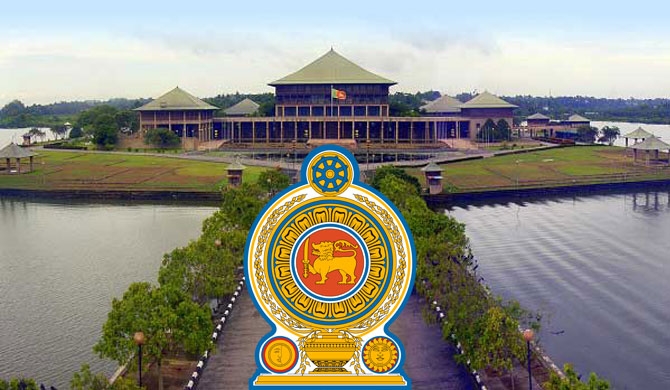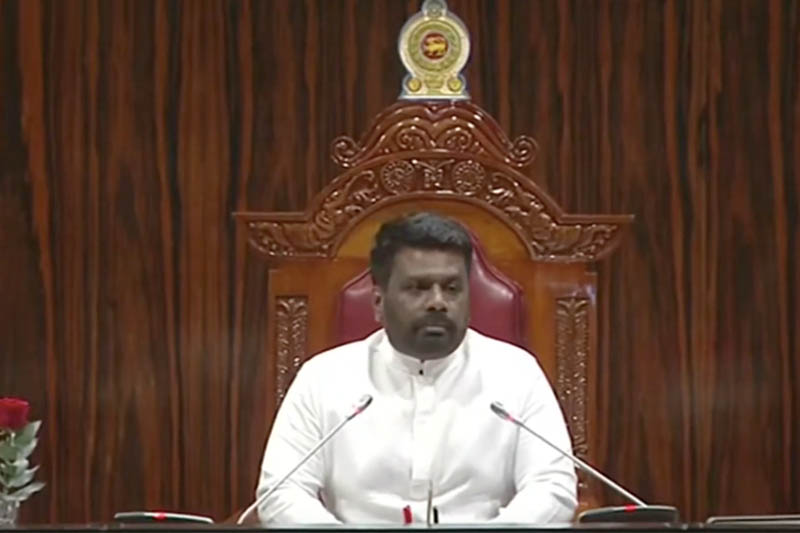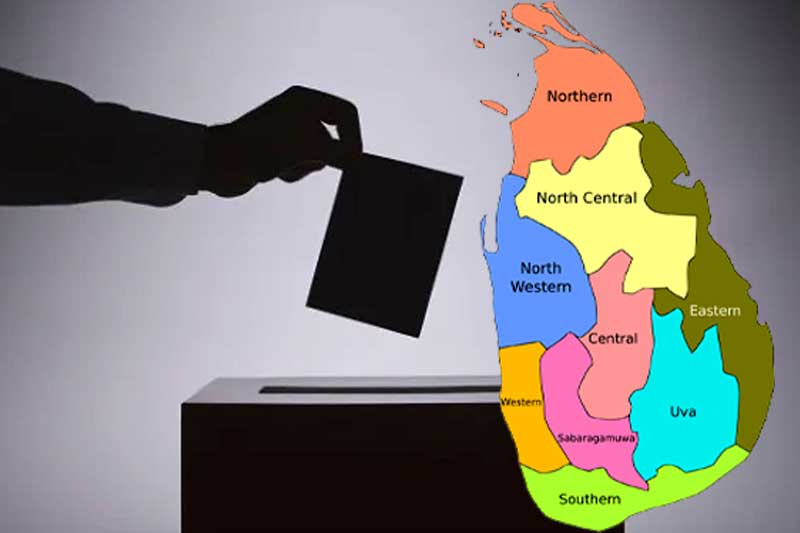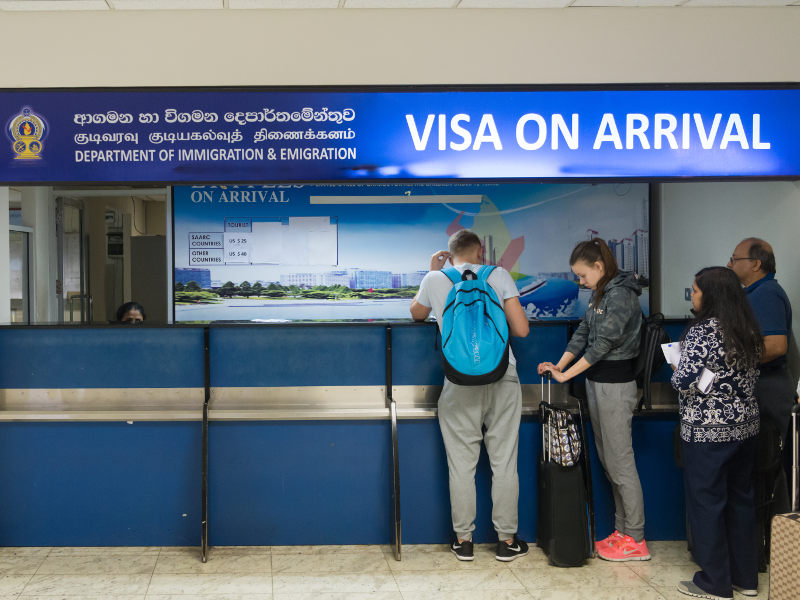An elected chairman of a Pradeshiya Sabha (divisional council) is shot dead by a lone gunman while meeting members of the public in his council office. The party to which he belongs protests strongly and calls the killing a political assassination. The cabinet minister in charge of public security makes light of the murder by alleging that the victim was a gangster with a criminal past. He dismisses it as an underworld dispute. It is against this bizarre backdrop that this column focuses on the killing of Weligama Pradeshiya Sabha chairman Lasantha Wickramasekara alias “Midigama Lasa” this week. Let me begin with a brief outline of the murder and its aftermath.
Two men arrived on a motorcycle at the Weligama Pradeshiya Sabha office on the morning of October 22, 2025. Weligama is a coastal town in the Matara district of Sri Lanka’s southern province. It is about 144 km south of Colombo.
October 22 was a Wednesday known as a public day. It is customary for the Pradeshiya Sabha’s elected officials to meet with members of the public each Wednesday. Lasantha Wickramasekara, the 38-year-old chairman of the Weligama Pradeshiya Sabha, was seated in his office interacting with people since 9.30 am. Wickramasekara, also known as “Midigama Lasa”, was elected in the May 2025 Local authority elections from the Samagi Jana Balawegaya(SJB).
The two men who arrived on a motorcycle alighted from the vehicle. While one remained outside the council, the other went inside. He was dressed in white and wore a black health mask which covered the lower part of his face. The man who had a file with him told the people assembled outside the chairman’s office that he had to get a document signed urgently by the PS chairman and sought permission to jump the queue and meet him next.
Among those outside the office were some men who were “unofficial” bodyguards of Lasantha Wickramasekara. None suspected anything, and it was agreed that the man could go in next and get his letter signed. So when a woman who had been conversing with the chairman came out, the man with the file went in quickly. It was 10.20 am.
Even as the Weligama PS chairman looked up, the man in white with a black mask, whipped out a revolver concealed in the file and fired at Lasantha Wickramasekara. He fired four times, hitting Wickramasekara in the chest, head and neck. The PS chairman, bleeding profusely, was rushed to the Matara district general hospital, 12 km away. While receiving medical treatment at the Intensive Care Unit(ICU), Lasantha Wickramasekara succumbed to his injuries. He was married and the father of three children.
CCTV Cameras
Meanwhile, the gun-toting assassin rushed outside, where his companion was already revving up the motorcycle engine. Both men then sped off. Subsequently, Police officers investigating the assassination reviewed footage of more than a hundred closed-circuit television (CCTV) cameras to trace the escape route of the killer pair.
According to Police sources, heavy rainfall had impaired the visibility of the footage in many instances. Nevertheless, two Police teams perusing the CCTV footage were able to discern that the duo had proceeded on the motorcycle along the main road through Matara, Nupe and Akuressa till they reached Amalagoda junction, 21 km away from the Weligama PS office. They had dismounted after passing the Junction and split up. Thereafter, both proceeded on different motorcycles and went off the CCTV screens, said news reports quoting Police sources.
Contrary to initial media reports that the Police had lost track of the suspected killers, the Police were quite active in tracing the movements of the suspects. Around ten special teams from the Police, CID and FCID were engaged in a coordinated exercise to apprehend the killers. They were directly supervised by the IGP Priyantha Weerasooriya himself. Four teams monitored footage of a number of CCTV cameras from different strategic locations. Support was also provided by the State Intelligence Service(SIS).
Kekirawa
The Investigation got a positive boost when information was received that suspects connected to the Weligama murder were hiding in the 50th Division area of Kekirawa in the Anuradhapura District. Acting on this information, a special Police team raided an abandoned building used for paddy storage on the morning of October 26. There was a scuffle in which a Police officer sustained injuries and was hospitalised.
Police, however, arrested a man and a woman in Kekirawa. Police also seized a motorcycle, narcotics and over Rs. 12 Lakhs of cash. Police also arrested a “Vadai” vendor from Kekirawa who had assisted the suspects to hide in the building and also provided food.
A key suspect, however, had managed to escape. It was discovered that the man who escaped was, in fact, the actual killer who gunned down the Weligama PS chairman. The arrested woman was his wife, while the arrested man was the accomplice motorcyclist.
The suspect who escaped was identified as Hakunugoda Paranaliyana Nuwan Tharaka, a former resident of Agulugama near Bandaragama in the Kalutara district. The suspect Tharaka is 5 feet 6 inches tall, with the word “ANURADA” tattooed in English on his right upper arm and the phrase “ys;=uf;a Ôúf;a’’ (Hitumatae Jeewethe)” (living life on one’s own terms) tattooed in Sinhala on his left arm. Police released Tharaka’s photograph and appealed to the public to provide any information leading to his arrest.
The investigation, spanning from Weligama to Kekirawa and ending in Nawinna, showcased an unusual blend of old-fashioned detective work and cutting-edge technology, including AI-generated suspect models that helped identify the fugitive assassin
Nuwan Tharaka
Meanwhile, the chief suspect, Nuwan Tharaka, who evaded arrest in Kekirawa, arrived in Colombo, reportedly by bus. According to Police sourced media reports, he stayed at the Sahaspura housing scheme in Borella. Since his photograph had been released by the Police, Tharaka went to a hair-cutting salon and changed his appearance by shortening the hair on his head and shaving off his beard and moustache.
According to media reports, Tharaka then went to Nawinna in Maharagama and purchased a phone and accessories from a mobile phone shop. It was then that an off-duty Police officer attached to the State Intelligence Service saw and recognised him. The SIS official had followed Tharaka and, with the help of local residents, apprehended him. Those who aided the SIS officer were under the impression that Tharaka had stolen the phone.
Interestingly, Tharaka’s appearance had changed after the close haircut and shave. He looked quite different to the photograph released by the Police. Then how did the SIS officer recognise him? According to Police circles, this was due to the SIS utilising Artificial Intelligence (AI) technology to create eight 3D models of the suspect’s various possible appearances. All intelligence officials were given these. Thus, when Tharaka went to buy a phone in Nawinna, the alert SIS officer, though off-duty, recognised him and was able to arrest him with the cooperation of the public.
Apparently, Nuwan Tharaka has been involved in crime in the past. According to the Police, Tharaka, the main gunman, has nine previous cases against him — six for theft, two for robbery and one for possession of illegal firearms. However, there is no record of him being implicated or involved in murder in the past.
The arrest and preliminary interrogation of Tharaka, his wife and accomplice resulted in more information being revealed about the killing. According to Police sources, the killing of Weligama Pradeshiya Sabha Chairman Lasantha Wickramasekara, alias Midigama Lasa, had been plotted and directed by a Sri Lankan underworld crime lord residing in the Middle East called “Midigama Chooty”.
“Dubai Lokka”
Though Midigama Chooty was the mastermind behind the murder, he had been arrested by the Police in Oman last June. Thereafter, two persons in Dubai, known as “Dubai Lokka” (Dubai boss) and Rajitha. It was Dubai Lokka and Rajitha, acting under Midigama Chooty’s orders, who interacted with Tharaka directly via phone and directed the assassination drama. Dubai Lokka is believed to be a native of Koggala named Wellaalage Chathura Kumara, alias Chathura Kumara a.k.a. Chathura. Very little is known about the other person, Rajitha.
According to Police sources, it was a contract killing, and Tharaka was merely a hired assassin. The fee was two million rupees or twenty lakhs. Of this, rupees fifteen lakhs had been paid in advance. A three-wheeler driver had brought Tharaka and his accomplice Lahiru to Weligama. A motorcycle was given to him by another person. A third person had given him the pistol, which Tharaka had reportedly returned after the assassination.
After the shooting, the killers had fled on a motorcycle, which they changed for another later on. Tharaka and his accomplice had split and travelled on two different motorcycles. Tharaka had gone to Ambalantota, where his parents and wife were. From there, Tharaka and his wife had gone to Kataragama, Wellawaya and Mahiyangana, where the accomplice, a 19-year-old youth named Lahiru, joined them. The trio then went to Kekirawa, where the wife and Lahiru were arrested. Tharaka, who escaped to Colombo, was arrested in Nawinna.
Nine Suspects
At the time this article was being written, nine suspects had been arrested in connection with the killing of Lasantha Wickramasekara. Among these, six are in the custody of the Police Financial Crimes Investigation Division (FCID). They are the suspected gunman Tharaka, his wife, his accomplice motorcyclist, the person who helped him in Kekirawa and the two persons from Sahaspura in Borella who gave him shelter. They are being held and interrogated under a 72-hour detention order.
Apart from the above-mentioned six, three others arrested by the Weligama and Matara Police have been produced before the Matara Courts and remanded. They were arrested for allegedly aiding the suspected killer or shooter. They are a three-wheeler driver from the Agulugaha area in Galle who provided transportation to the shooter before the murder, the owner of a garage in Walana who repaired the motorcycle used in the murder, and a youth from Polathumodara who brought the motorcycle to the shooter, Tharaka.
“Dr Jekyll and Mr Hyde”
The Weligama shooting was the 103rd of its kind to take place this year. 52 People have been killed in such incidents so far. The 52nd victim, Lasantha Wickramasekara, was a native of Midigama in Weligama. He was earlier a member of the United National Party (UNP) but had split and aligned with the Sajith Premadasa-led Samagi Jana Balawegaya(SJB). Though Wickramasekara dabbled in open politics, there was a darker side to his life, too. He was allegedly linked to some gangs engaged in drug peddling and possessed an unsavoury criminal record. Lasantha Wickramasekara, alias Midigama Lasa, was in that sense a “Dr Jekyll and Mr Hyde”.
According to Police sources, Lasantha Wickramasekara alias Midigama Lasa was at one time closely associated with notorious drug dealer Nadun Chinthaka alias “Harak Kata”. Lasantha himself had six cases filed against him in the Kurunegala, Matara and Galle Courts. He had received a suspended sentence in a case pertaining to a narcotics offence. Despite this criminal record, the SJB had given Wickramasekara a nomination for the Weligama Pradeshiya Sabha elections in May 2025. It is said that Lasantha Wickramasekara had de-linked himself from gang activities and that there was a souring of relations with his erstwhile underworld comrades.
Polls Campaign
Rival political parties, especially the Janatha Vimukthi Peramuna(JVP) led National People’s Power(NPP) had criticised the SJB in general and Wickramasekara in particular over his criminal record during the polls campaign.
Nevertheless, Wickramasekara won handsomely, polling 67% of the votes in the ward he contested. The JVP-led NPP won the highest number of members in the PS poll but did not get a majority. Wickramasekara then spearheaded a political move to gain control of the council by cobbling together a coalition of opposition parties.
This led to much controversy. There were allegations of two NPP councillors being abducted. It was later found to be a drama enacted against the SJB. There was another instance of shots being fired at the house of a PS councillor. A female councillor was threatened over the phone. After hectic politicking, the SJB gained control of the Weligama PS in July. Wickramasekara, with 23 Votes, was elected chairman. The NPP candidate got 22.
Death Threats
The Pradeshiya Sabha chairman’s troubles were not over after victory. Lasantha started getting death threats from the time he was sworn in as Weligama PS Chairman. It appeared that the threats were from his erstwhile gangster comrades. It was indeed a puzzle as to why the “gangsters” chose to threaten him after becoming chairman instead of doing so earlier. Lasantha became a target of sorts. He was threatened openly through posts on social media.
A desperate Wickramasekara wrote to the IGP in late August seeking Police protection. He submitted an affidavit titled “Regarding Securing my life Safety” requesting appropriate security measures due to threats to his life. He was denied Police protection. Thereafter, Wickramasekara went around with some unofficial bodyguards. However, these bodyguards were unable to prevent him from being killed.
Sajith Premadasa
The killing of the Weligama PS chairman and the fact that he was denied Police protection were raised in Parliament. SJB Leader and leader of the opposition Sajith Premadasa stated as follows -“He(Wickramasekara) wrote directly to the IGP, warning of a planned assassination either while attending court or leaving the council premises. He submitted a sworn affidavit requesting adequate security during and after his official duties. Why did the government fail to protect him?”
SLPP MP Namal Rajapaksa followed up, saying, “If a citizen formally requests protection and the police ignore it, what are we supposed to say? It’s easy to point fingers, but Lasantha clearly warned of threats to his life. Authorities failed to act”.
Ananda Wijeyapala
The Minister of Public Security, Ananda Wijeyapala, in a special statement to Parliament, emphasised the following –
“Lasantha Wickramasekara, the Weligama Pradeshiya Sabha Chairman, was an underworld criminal despite being elected as a public representative. He has six Court cases. He is someone connected to underworld activities, serving suspended sentences. There have been disputes between underworld gangs in the recent past. This is one such dispute, and these disputes are escalating into murders”.
Public Security Minister Wijeyapala also said that Wickramasekara was listed in the government’s criminal registry (IRC) and was therefore not eligible for police protection. He further said, “Protection is granted under the Victim and Witness Protection Act. The police cannot provide security to registered criminals”.
Politician/Gangster
The crux of the matter seems to be the “Jekyll and Hyde” duality of Lasantha Wickramasekara alias Midigama Lasa. The SJB-led opposition portrays him as the politician Lasantha Wickramasekara, and elected chairman of the Weligama Pradeshiya Sabha. The Government depicts him as Midigama Lasa, the underworld gangster with links to drug dealers and narcotics peddlers. It seeks to shame the SJB for giving a nomination to a gangster.
The Public Security Minister Ananda Wijeyapala has jumped the gun by calling the murder a gangland killing even before anyone was arrested. He has also tried to justify the refusal to grant the victim Police protection on the grounds that he was a criminal. Taking an obvious cue from the man on top, the Police strains every sinew to prove that Wickramasekara was indeed killed by gangsters or contracted killers. In their haste to please the political masters, the Khaki-clad fraternity goes to the extent of circulating confessions of an apprehended killer over social media.
It may very well be true that the Weligama PS chairman was indeed a victim of gangster strife and was not killed due to political reasons. However, the ham-handed acts of omission and commission by the Government have resulted in a crisis of credibility. The Govt must ensure that the public feels that a genuine investigation is being conducted. Justice should not only be done but also should appear to have been done.
Troubling Thoughts
Let me conclude with a few troubling thoughts.. The Govt and Police may be correct in calling the killing a gangland execution, but why was Lasantha Wickramasekara killed in his office while discharging his duties as the elected chairman of the Weligama Pradeshiya Sabha? Why not somewhere else? Was this a symbolic answer to the question of whether the murder was a political assassination or gangland execution?
D.B.S.Jeyaraj can be reached at dbsjeyaraj@yahoo.com.
